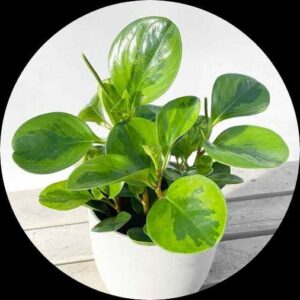- Empty cart.
- Continue Shopping
Tillandisa (Air Plant)
Original price was: ₹500.00.₹350.00Current price is: ₹350.00.
Genus : Tillandisa
“The Tillandisa, commonly known as an Air Plant, is a fascinating and low-maintenance plant that adds a touch of elegance to any setting. Its unique form and ability to thrive without soil make it a versatile choice for creative displays. Bring home the Tillandisa Plant and enjoy its effortless beauty.”
Tillandsia, commonly known as air plants, are a diverse and fascinating group of epiphytic bromeliads that do not require soil to grow. They are native to the Americas, ranging from the southern United States to Argentina, and can be found in a wide variety of habitats, from tropical rainforests to arid deserts. Here’s a more detailed description of Tillandsia (Air Plant) plants:
Appearance: Tillandsias come in many shapes, sizes, and colors, and their unique and exotic appearance is one of the main reasons they are highly sought after by plant enthusiasts. Most Tillandsias have slender, strap-like leaves that can be stiff or flexible, and they often have specialized structures called trichomes that cover the leaves and allow the plant to absorb moisture and nutrients from the air. Trichomes give the leaves a silvery or grayish appearance, although some species or cultivars may have leaves that are green, red, or even variegated. The leaves can be arranged in rosettes, spirals, or clusters, and some Tillandsias produce a central inflorescence with colorful flowers that can last for weeks to months, depending on the species.
Size: Tillandsias vary greatly in size, with some species growing as small as a few inches and others reaching several feet in length. The size of a Tillandsia plant can depend on factors such as its species, age, and growing conditions.
Flowering: Tillandsias typically bloom once in their lifetime, producing a stunning inflorescence that emerges from the center of the plant. The inflorescence can range in color from white and yellow to pink, purple, or red, and it often bears tubular flowers that are pollinated by hummingbirds, butterflies, or other insects. The flowers can be fragrant, and they can last for several weeks or even months, adding an additional dimension of beauty to these unique plants.
Care Requirements: Tillandsias are known for their adaptability and resilience, but they do have some basic care requirements to thrive. Here are some general care guidelines for Tillandsia (Air Plant) plants:
- Light: Tillandsias prefer bright, indirect light, such as near a window with filtered sunlight or under fluorescent lights. They can tolerate some direct sunlight, especially in the morning or evening, but intense sunlight can cause leaf burn. Avoid placing them in deep shade, as they still need adequate light for photosynthesis.
- Water: Tillandsias absorb moisture and nutrients from the air through their leaves, and they require regular misting or soaking to maintain their health. Mist your Tillandsia 2-3 times a week, or soak it in water for 15-30 minutes once a week. Shake off excess water after watering to prevent rot. Use distilled or filtered water, as tap water with high mineral content can damage the leaves.
- Air circulation: Air plants need good air circulation to thrive, as stagnant air can promote fungal or bacterial growth. Place them in a well-ventilated area or use a fan to promote air movement around the plants.
- Temperature: Tillandsias prefer moderate temperatures, ranging from 50 to 90 degrees Fahrenheit (10 to 32 degrees Celsius). Protect them from frost or extreme heat, as they are sensitive to temperature fluctuations.
- Fertilizer: Although Tillandsias can absorb nutrients from the air, they can benefit from occasional fertilization. Use a weak, water-soluble bromeliad or orchid fertilizer once a month during the growing season (spring to fall). Avoid using fertilizer with high copper content, as it can be toxic to Tillandsias.
- Display: One of the unique features of Tillandsias is their versatility in display













Reviews
There are no reviews yet.